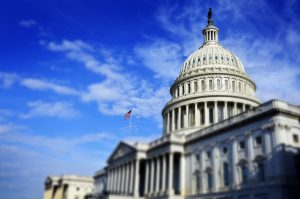
President Biden has signed into law the new debt ceiling agreement that he reached with U.S. House of Representatives Speaker Kevin McCarthy (R-CA). The Fiscal Responsibility Act (FRA) suspends — as opposed to raising — the debt ceiling until 2025, after the next presidential election.
The FRA also makes a variety of changes related to domestic spending, although it falls far short of the cuts included in the Republican bill that the House passed in April 2023, with no changes to Social Security and Medicare. Nonetheless, the Congressional Budget Office (CBO) projects the law will reduce the federal deficit by about $1.5 trillion over 10 years.
The main provisions
The new law primarily tackles discretionary spending. The notable provisions address:
IRS funding. The Inflation Reduction Act (IRA), which was enacted in 2022, included an additional $80 billion in funding for the tax agency, with much of it designated for heightened enforcement activity against wealthy taxpayers. The FRA immediately rescinds $1.39 billion and pares back the funding by about $10 billion each year for 2024 and 2025. However, White House officials have indicated that they expect the funding cuts to make little difference in the IRS’s pending expansion plans because the agency planned to spend the original funding over several years. It may be able to spend some of the funds earmarked for later years earlier and then return to Congress to request more funding in the future.
Spending caps. One of the more contentious focuses of the negotiations was non-defense discretionary funding for programs such as scientific research, domestic law enforcement, forest management, environmental protection, air traffic control, and nutritional assistance for mothers. The final result is a virtual freeze on this spending, facilitated in part by the reduced funding for the IRS. The spending will drop by about $1 billion in the 2024 fiscal year, compared to this fiscal year, with a 1% increase slated for the 2025 fiscal year. This amounts to a cut, as inflation is expected to grow at a rate greater than 1%. The final non-defense figures are $704 billion for 2024 and $711 billion for 2025.
Defense and veterans affairs spending. The FRA provides President Biden’s budgeted funding for the military and veterans affairs for 2024, adjusted for inflation. Total defense spending will grow to $886 billion in 2024 and $895 billion in 2025.
Student loan debt. The new law codifies President Biden’s previous announcement that the moratorium on student loan payments precipitated by the COVID-19 pandemic won’t be extended beyond this summer. His plan to cancel student loan debt for many borrowers — to the tune of $430 billion — isn’t part of the law. (However, the plan currently is under review by the U.S. Supreme Court.)
Work requirements. Certain recipients of Supplemental Nutrition Assistance Program (SNAP) and Temporary Assistance for Needy Families (TANF) benefits will face new work requirements, although Medicaid recipients won’t. Specifically, the FRA raises the top age at which adults without children living in their homes must work to receive SNAP assistance, from 49 to 54, phased in over three years. However, the law includes exemptions for the homeless, veterans, and individuals age 24 or younger who were children in foster care. It also includes provisions that could increase the number of individuals who must satisfy work requirements to receive TANF benefits from their state programs. Yet, the CBO estimates that the various changes will actually result in more people receiving assistance.
COVID-19 clawback. Much of the remaining unspent COVID-19 relief funds, estimated to equal $30 billion to $70 billion, will be “clawed back.” Portions of that funding will be retained, though, including a certain amount for vaccines.
Permitting for energy projects. The FRA includes rules designed to make it easier for new energy projects, including fossil fuel projects, to obtain permit approval.
More to come
Additional updates are expected in coming months. We’ll continue to keep you posted. In the meantime, please feel free to reach out to the Cg Team with any questions. © 2023

